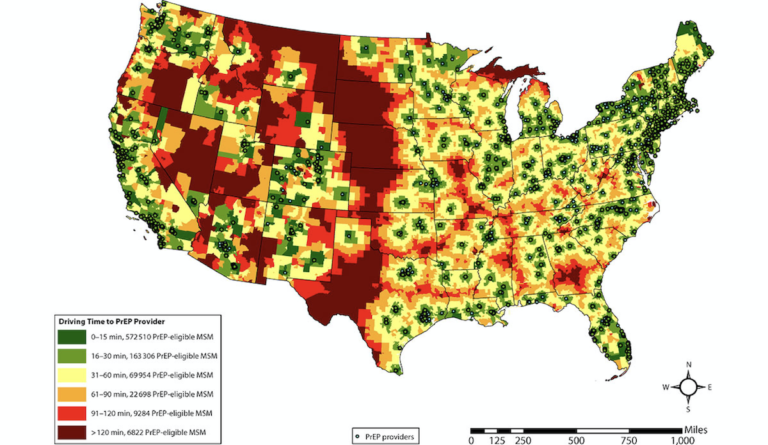PrEP Talk
Improving access to PrEP across the country for those out-of-reach from nearby providers will be a crucial component to end the HIV epidemic by 2030.

Read Time: 2 minutes
Published:
Since 2012, pre-exposure prophylaxis (PrEP) has helped prevent HIV in thousands of individuals, particularly men who have sex with men (MSM). When taken daily, the medication reduces the risk of getting HIV from sex by 99%. Inconsistent PrEP use is far less effective. The treatment requires a prescription and, in some cases, patients need to convince their physician they need it. Because PrEP involves at least four physician visits each year, distance from that provider predicts treatment success.
By combining data from the CDC, the US Census, and PrEP Locator, a database of PrEP clinics, researchers identified PrEP deserts in the United States. The researchers considered a PrEP desert to be any location where the one-way drive to the nearest provider would take more than 30 minutes.
While nearly 68% of PrEP-eligible men (2.3 million) were less than 15 minutes from a provider, 13% (109,000) needed to drive more than a half-hour (represented on the map by all colors except green). PrEP providers clustered in urban areas in the Northeast and West, leaving those elsewhere in the country with much longer travel times. In fact, census tracts in the South were nearly eight times more likely to be a PrEP desert than those in the Northeast.
The researchers acknowledge their analysis assumes ideal traffic conditions, thereby underestimating the challenge for city dwellers and lower-income individuals who rely on public transportation. Men living in suburbs also faced challenges: a quarter of all PrEP-eligible MSM living 30 minutes from a provider live in suburban areas.
The US has set forth an ambitious plan to end the HIV epidemic by 2030. Improving access to PrEP across the country will be a crucial component of such efforts.
Databyte via , 2019: Geographic Access to Preexposure Prophylaxis Clinics Among Men Who Have Sex With Men in the United States. American Journal of Public Health 109, 1216-1223.



